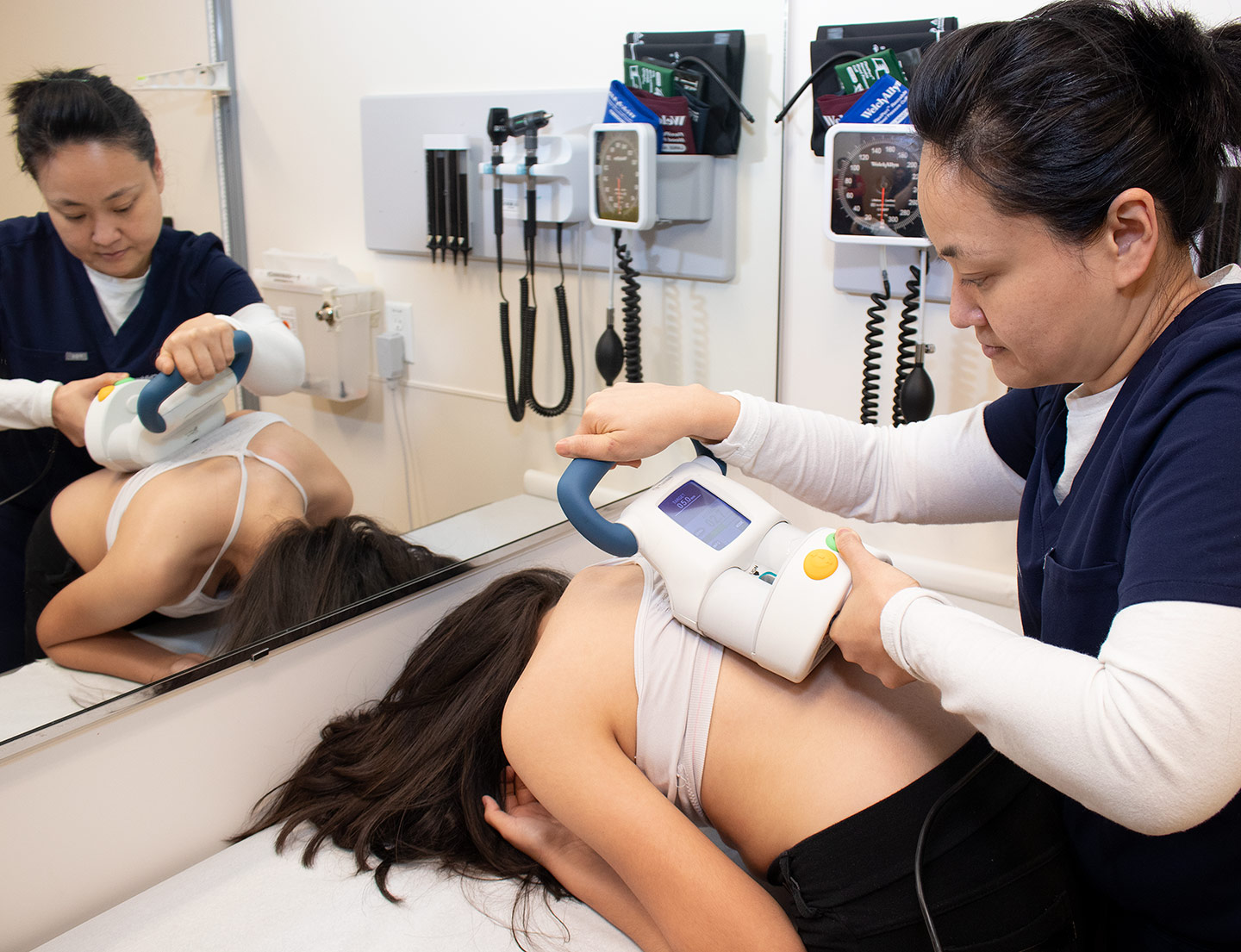Radiology and Imaging
Many children visit radiology and imaging the same day they're seen by a Shriners Children’s physician, which means no time lost scheduling another appointment or driving somewhere else.
Radiology and imaging is a noninvasive way for our pediatric specialists to see what is going on inside a patient, which helps determine the best treatment. At Shriners Children's, our radiology and imaging professionals work to do this in the safest way possible, using standard X-ray machines as well as more advanced imaging technology. Your child’s condition and specific needs will determine which radiology and imaging technology will be used.
What is an X-ray?
An X-ray uses radiation waves to take pictures. As an X-ray beam passes through your body, the tissues and bones absorb and/or block the beam, creating a shadow that's picked up on a film or sensor. On an X-ray, bones appear white, open space appears black and muscles or soft tissues appear grey.
When imaging children, we make sure we use the lowest possible radiation dose, described as ALARA (As Low As Reasonably Achievable).
The Benefits of EOS Imaging
X-rays expose children to radiation in low doses, but at Shriners Children's, we take additional steps to reduce this exposure. We use EOS imaging for many of the X-rays we take, and we have the largest number of EOS imaging systems of any healthcare organization. EOS is a medical imaging system that provides front and side images while limiting the X-ray dose absorbed by the patient who is either sitting or standing.
EOS offers a number of advantages over more traditional X-ray units, including fast, stress-free, low-dose radiation exams for children with hip, knee and spine conditions. It's ideal for children with conditions that require multiple X-rays. Studies have shown that using low-dose EOS imaging can reduce the radiation dose by 55% compared with digital and computed radiography (standard X-ray technologies), without compromising image quality.
Eliminating the Fear of X-rays
EOS scans are also easier for children that may have a fear of X-rays. These scans, which take 6 seconds or less with a total exam time of 3-4 minutes, capture both front and side views of a child's body and can be taken with the child sitting or standing in a natural, weight-bearing position. There's no need for them to lie down or turn over.
A Clearer Picture
With these consistent, high-quality images, EOS can deliver more precise measurements, in addition to providing 2D and 3D views of a child’s bone structure. The EOS images can give our physicians a clearer picture of a problem and its complexities, which allows them to deliver a more accurate diagnosis and create a more personalized treatment plan. The 3D images can also help plan more effective pediatric surgeries.
With the EOS system, we no longer have to stitch together multiple smaller images to see an entire area. These quality images enable us to better understand where the problem is and its complexity before we operate, thus bettering our ability to correct the problem.










